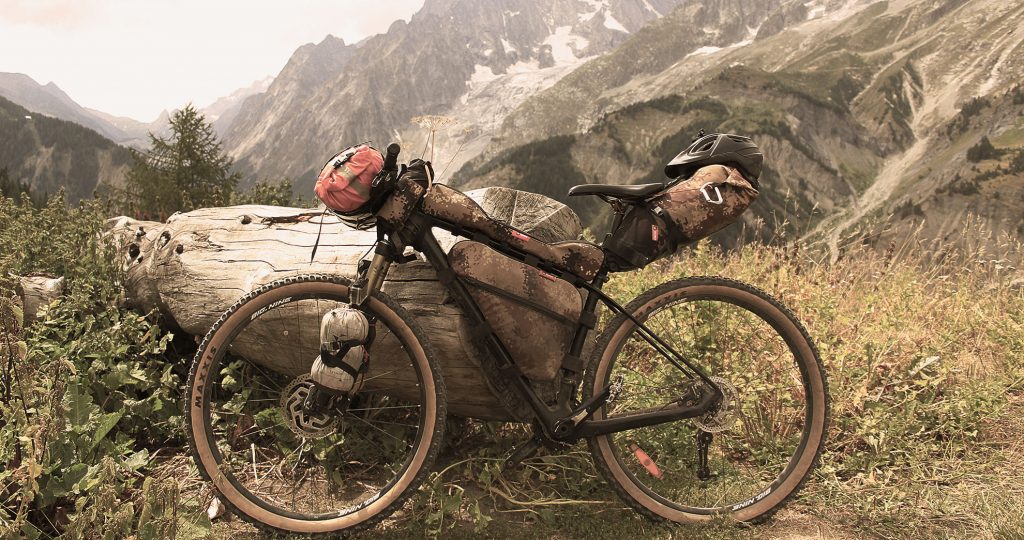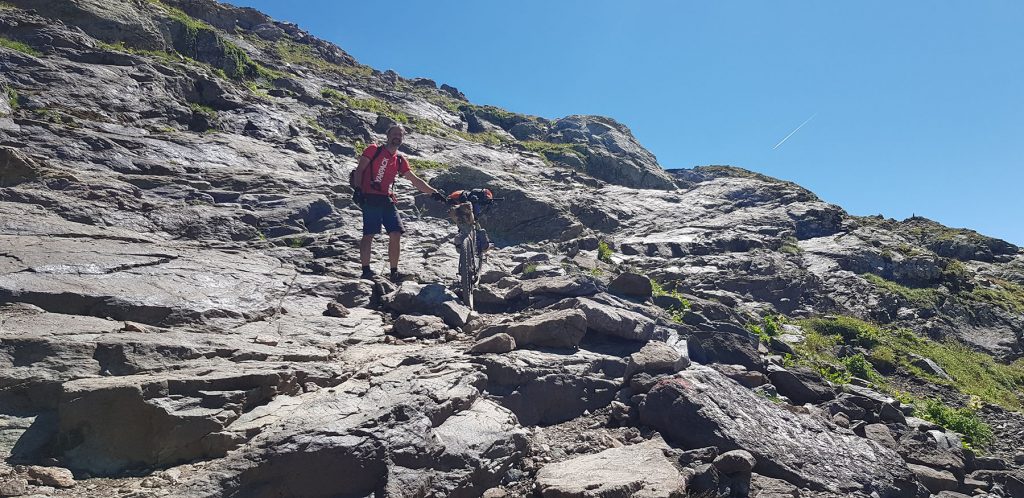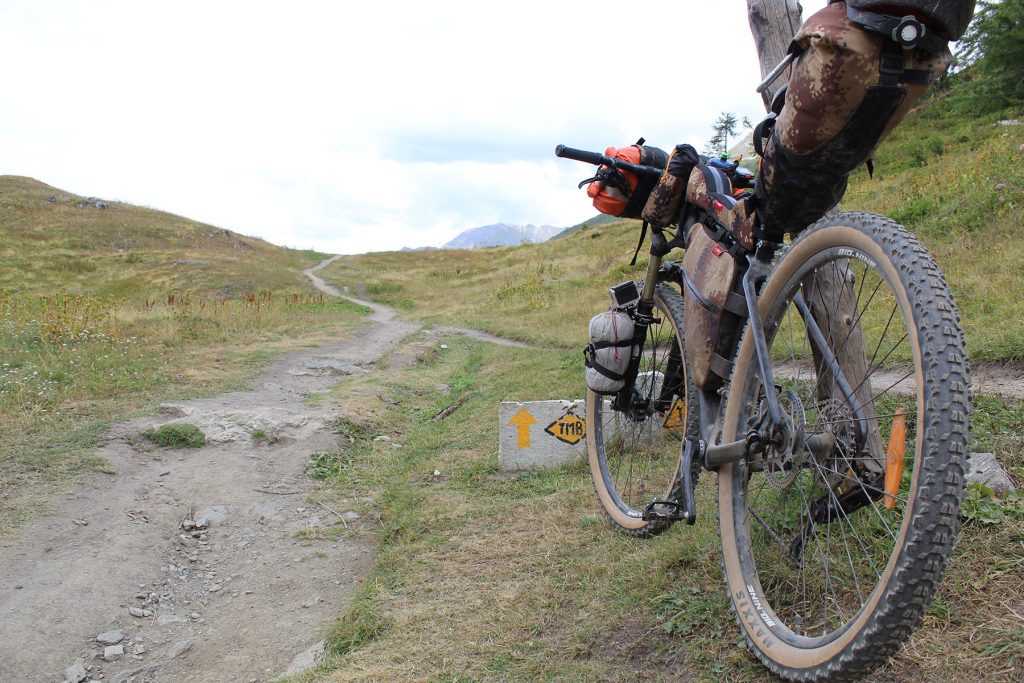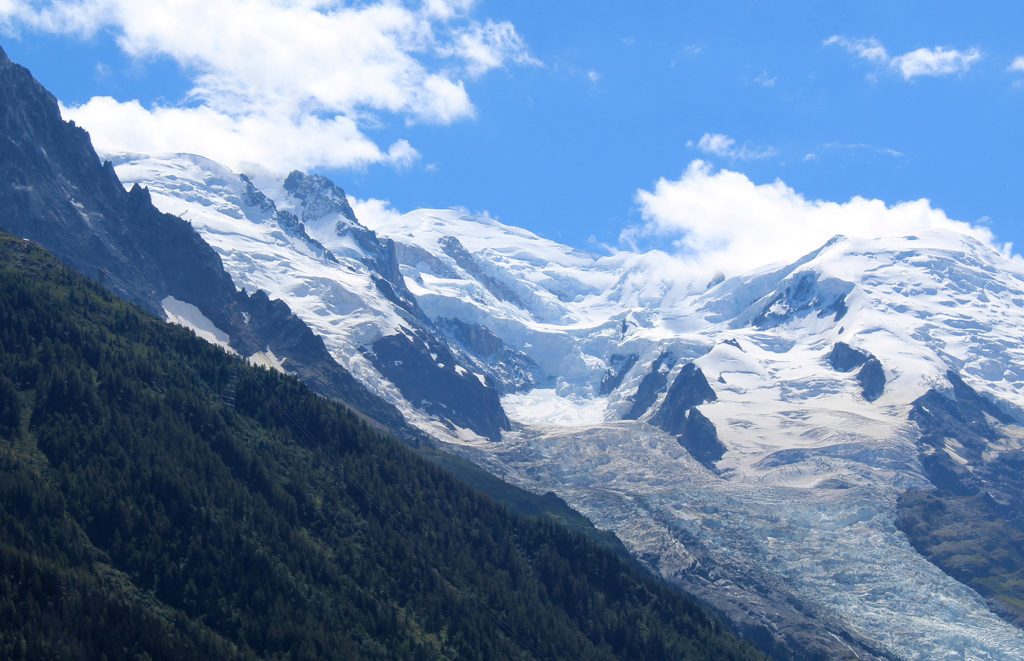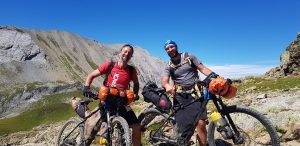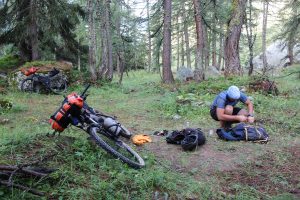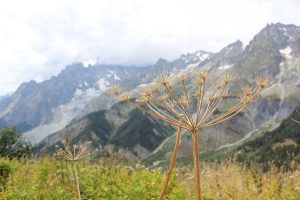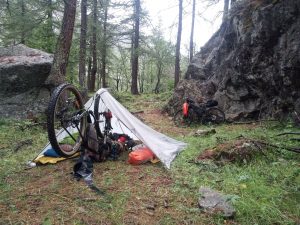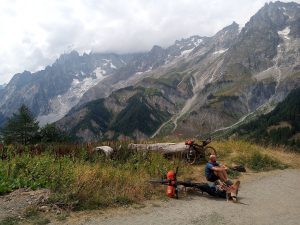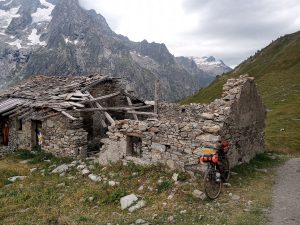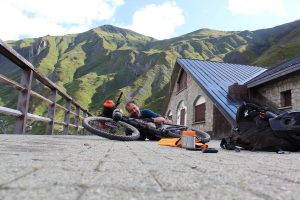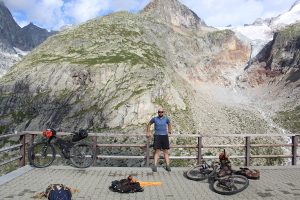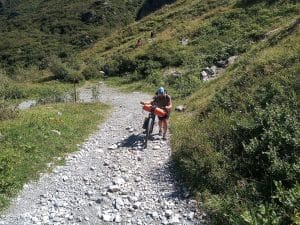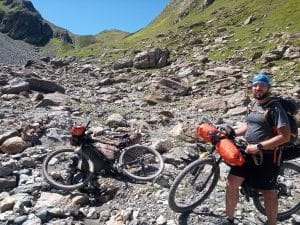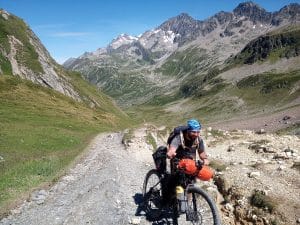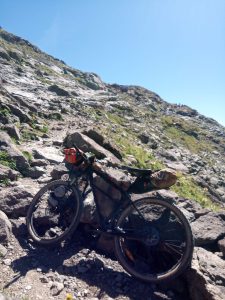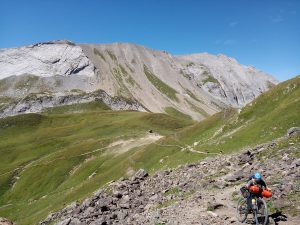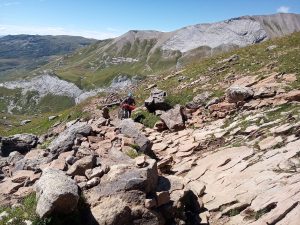Nincsenek termékek a kosárban.
I didn't think we would do it easily. After all, the tour was rated 9 out of 10 on bikepacking.com, as far as difficulty is concerned. The route goes through three countries and goes around the block of Mont Blanc, mostly on a pleasant trekking path. I mean, it's pleasant on foot. With loaded bikes it looked a little different. We found a usable logo on the bikepacking page, so we went based on that.
204 km, 9200 m level, 3.5 days.
It's worth taking the time to prepare before you set off tomorrow, inspired by the pictures. The most important thing: you will carry your bike a lot, every gram will hurt. Pack only what is absolutely necessary. Only a small pack for the forks, because they get caught in the stones, you can also forget the rear luggage rack. However, since you have to prepare for high mountain conditions, you will need almost everything. Tent or tarpaulin, bivouac bag, sleeping bag, warm jacket, waist pack. The weather can change completely in seconds. You can't rely on the shelters, because many are closed, you have to prepare for self-sufficiency, so it's good if you have a gas stove with you. We usually bring Deka dried food, it's the easiest. Don't go with Gravel, just Monti. Spare brake pad. It is worth paying attention to the weather reports in advance, at least you can see the trends. Of course, the weather can be completely different on the mountain. We went at the end of August, it must be great in September too.
Around noon on Sunday, after an hour's sleep, we left Courmayeur, Italy, in the direction of the Swiss border. The weather seemed quite uncertain, there was no specific goal, we rode as long as we could. We could have saved a few hundred meters of elevation here, but we climbed the mountain, leaving the asphalt road, to then descend again and bivouac for a while, although it rained quite a lot at night. Basically, it's not much possible to bivouac below 2500m, but at the same time, no one talks to you. Down in the valleys, it doesn't hurt to be careful not to be too obvious. However, the devil doesn't sleep - let's say he doesn't roll all day - it was usually quite dark when we camped.
The next day we started for the Grand Col Ferret (2530m), which was the highest pass during our trip, a clayey, well-trodden path leads up, mostly pushing, a few times carrying a sled, but a relatively pleasant route. We got a taste of what awaits us on the way. We reached the roof in the early afternoon. The view was unparalleled, he forgot about the muscle spasms. From there it's just a roll through the La Peule shelter to Ferret. These small Swiss villages are astonishingly beautiful, as if time had stopped a few hundred years ago, and everything exudes an inexplicable calm. We needed this because there was a not very high – above 2000m anyway – but at the same time completely impassable section after Champex. It's a strange feeling to climb into a pit from which there seems to be no way out, and then suddenly you see the way, but that doesn't make you click with satisfaction. We offered ourselves. It was quite dark by the time we reached the Forclaz pass, after a few hundred meters of descent. Here at the campsite, we packed up, set up the usual bicaj tent, food and sleep. Judging by the looks of the other campers, the bike tent is not a common method around there. The last few meters take you past a cow farm, which was just enough to get everything completely mixed up. This is awkward because we attach the tent tarpaulin to the wheel and most of the wheel is under the tarpaulin near our nose. We survived, where it stinks, there is warmth. Anyway, if the weather permits, it is much better to sleep somewhere on the mountain.
The next day was a day of rest compared to the previous ones. Or rather, we tried to gain kilometers - let's say we didn't swim below 2500m this day either. The original plan would have been the Balme pass, but we crossed one below it at Le Jeur to the French section. Uphill pleasant rolling on a good road, crushing downhill from the border all the way to Vallorcine, on loose gravel. Chamonix is just a stone's throw away, and we were on time, here we could finally catch a glimpse of Mont Blanc. Mázli is surprised that the top was also visible. We didn't rest much, we continued on some asphalt and some gravel to Les Contamines Montjoie, in order to gain some distance later that day. In the French part, there are relatively many mountain bike routes, it is worth exploring and using them. We decided to stay somewhere exceptionally, we needed a shower and a decent meal, and the Bonhomme pass in front of us didn't look funny. In comparison, we received such a four-course dinner with a cheese plate and dessert that it is almost impossible. In the morning, we filled up our supplies in the village, our gas bottle also ran out, but you can find countless sports shops and general stores, where you can get everything, even brake pads, if you run out by now.
The usual relatively leisurely climb in the morning was replaced in the afternoon by pushing a little more, and then I drop a couple of meters. Sparkling sunshine, scorching heat, daydreaming tourists. Here we maxed out rock carrying, every meter had to be fought for, and the Col du Bonhomme was just the beginning. The road from here to Refugee de Bonhomme really gave up the lesson. It's trying even on foot. Many times the road led upwards on smooth rock slabs, luckily everything was bone dry. The SPD pike is not exactly ideal here. No matter how hidden the buckle is, somehow you always hit the rock first. The descent after the reward beer is not our usual finale either. Sometimes the rear wheel didn't touch the ground. A narrow single-track path leads down, the stones leave little room for playing. Let's just say the bags didn't come loose, and even the small bags didn't fall off the fork. In short, everything has moved together, it is only up to us to stay with our past balance. We managed to get down to Les Chapieux together. The road from here to the Refuge des Mottets was very easy, then again a serpentine up towards our last pass. We didn't rest much here either, we quickly cooked some spaghetti because I was getting hungry. We split it up, Bala was fussy in the morning until he warmed up, and I was in the evening when I got hungry.
It was getting dark when we continued towards the Col de la Seigne, which is our last pass, and we didn't know what to expect. We had a good time here as well, we made very good progress uphill. It was quite dark by the time we looked for a place to bivouac. Well, we didn't really find a horizontal one, we finally set up the tarpaulin a few meters from the road. We got in quite properly, two courses were simmering in the tin pit, the light was shining behind the opposite mountain range, lots of stars, music in between, we were satisfied. Then we tried to sleep, but we always ended up in front of the tent from the slanted mattress. We gave up crawling up in the worm position and slept as best we could. Until it started to rain. Lesson learned: keep moving until you find a good place, rather than staying awake half the night. Finally, at dawn, it's better to have a coffee, pack up, and head for the pass. We wound our way up in the dark. There were a lot of sheep in the paddocks along the road, only their eyes glimmered in the darkness as they reflected the light of the headlamps - well, it was eerie. We reached the top of the pass just at sunrise, an incomparable sight of the mist rising from the valley and the rays of the sun breaking through it. The slanted bivouac site and the nemalvás immediately made sense. We were in Italy again.
From there we just rolled back to Courmayeur and ended the tour here, we had to hurry home. If you have time, you can plan many more beauties for this day, you don't have to go straight down.

